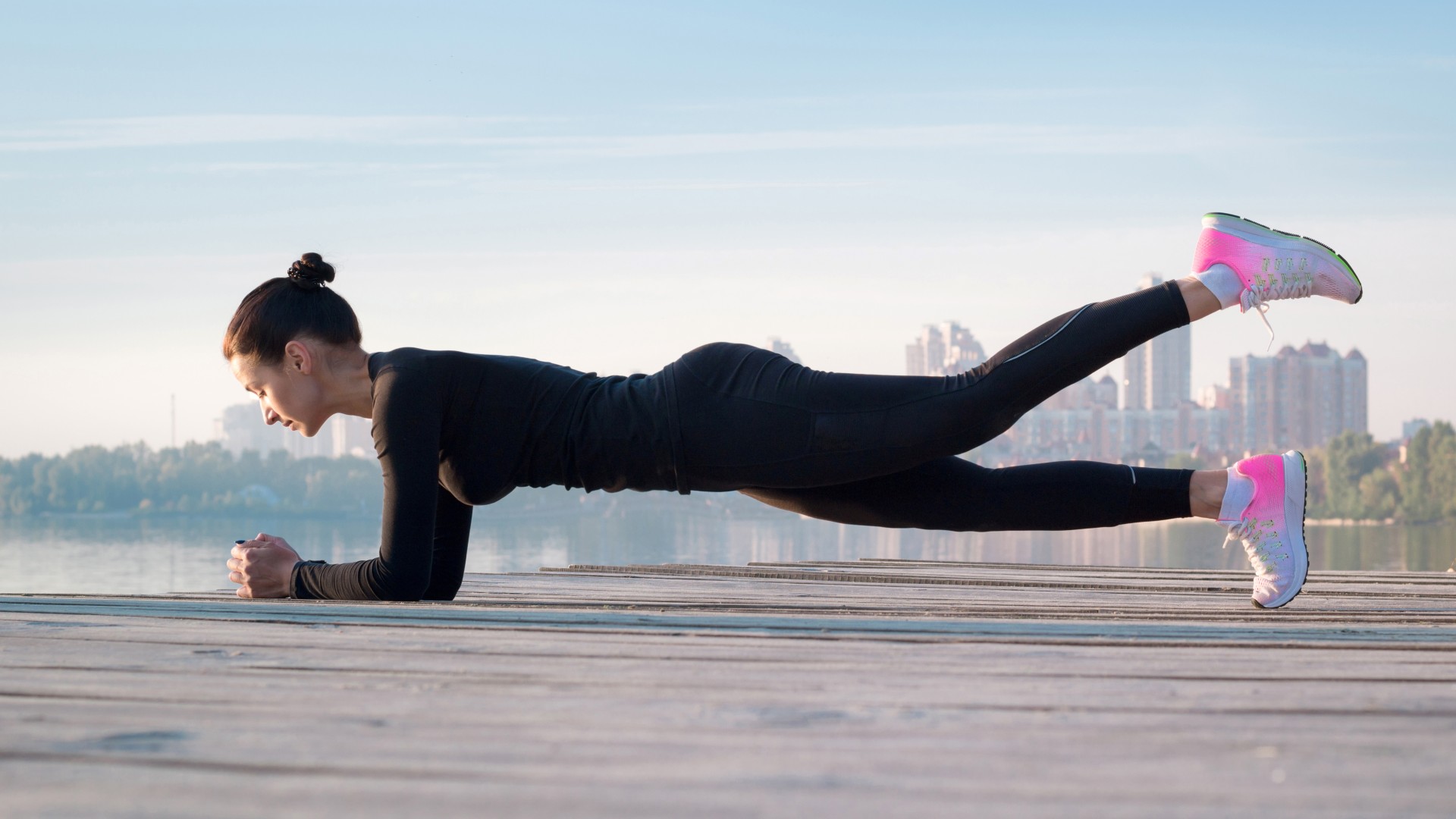
I’m a sucker for a challenge, and having recently discovered the scorpion plank, or plank scorpion, as it’s also known, I decided to try the exercise out during my latest Friday afternoon core workout.
Scorpion planks appeal to me because I prefer using compound exercises in my ab workouts; compound moves are multi-muscle, meaning they target more than one muscle group at the same time while building strength and improving muscular balance and coordination.
Best of all, I didn’t need any equipment to get started with this core exercise because I could simply roll out one of the best yoga mats at home and give it a try. Here’s what I learned and why I wouldn’t necessarily recommend it to everyone.
How to do scorpion planks
There are several variations of this core exercise. Some people perform it from a high plank (straight arm) position and others from the elbows in a forearm plank.
I’ve also seen some people transition by flipping over fully so that the chest faces the ceiling in a variation of reverse plank, and some perform it so they add a push-up as they flip the leg over, called a scorpion push-up.
The most popular (and, in my opinion, the safest) method I’ve found is from the forearm position, so here’s how to do it.
- Start in a forearm plank position with shoulders stacked over your elbows, hips aligned with your shoulders and balancing on the balls of your feet
- Brace your core and glutes and maintain a straight line from head to toe
- Very slightly pull your shoulder blades apart and dome the upper back
- Bend your right knee, lift it into the air, rotate your torso, turn your hips and reach your right leg over to the left side
- Keep the right knee bent and elbows pressing down. If you can, tap your toes to the ground
- Return to the plank and repeat on the other side
If you prefer to engage your arms more, perform from a straight-arm plank position, but be aware that this might place more strain on your lower back as your leg has further to travel. If you suffer from sciatica or localized lower back pain, I advise skipping the exercise.
I just added scorpion planks to my core workouts — here's what I learned
It’s a full-body exercise
Many muscle groups recruit during this exercise, so it can get intense. The scorpion plank is rotational, meaning you’ll engage your obliques to assist with movement while recruiting your whole trunk for stability.
The erector spinae muscles that hug and protect your spine will also work alongside your shoulders, arms, hip flexors and legs throughout, essentially making this a full-body workout.
I preferred performing the move from the forearm plank, as I found rotating my body from a straight-arm position aggravated my left shoulder and I couldn't reach my leg as far round. It’s also more accessible if you want to aim for a full range of motion and tap your toes down behind you.
It's unsuitable for beginners
The Journal of Physical Therapy Science explains that although used in many sports and activities, trunk rotation is a “key risk factor for low back pain.”
During rotation, many muscles are at work, including the internal and external obliques, rectus abdominis (abs), latissimus dorsi (wing-shaped muscles that run down the sides of your back), lumbar multifidus and transversus abdominis (deeper belt of core muscles beneath the abs).
If you’re not already familiar with engaging your core when working your abs during exercise, I recommend learning how to plank first, then check out some of the best plank variations to build up your experience, some of which include gentle rotational movement to help build the necessary strength for exercises like the scorpion.
It stretches the hip flexor muscles
Having recently added “Mike Tyson push-ups” to my upper body workout, where I was surprised to find my lower body flexibility greatly tested, I was equally surprised to discover that the scorpion plank taps into torso and lower body mobility.
As you lift and reach the moving leg behind the body, the scorpion plank delivers a hip flexor and abdominal stretch that I enjoyed. But the rotational movement also tests your ability to twist your leg to one side while keeping your hands on the floor — hello, core stability and mobilization.
If you find your range of motion limited for any reason, try bending the knee of your moving leg and gently tapping your foot just wide of your opposite foot instead, which should feel more accessible and similar to plank hip dips.
You could also try the same exercise from a high plank position and bring your knees down to the mat, practicing bending and lifting one leg at a time from the kneeling plank position.
Verdict
I programmed the exercise alongside these kettlebell standing ab exercises and followed a short routine from my mat at home. It took 15 minutes, and I adopted the pyramid format included in the workout, adding two reps to each exercise per round.
The scorpion plank slotted in perfectly with these exercises because they already deliver a mix of rotational and stability core work. As a combo, this delivered plenty of fiery intensity to my waist.







